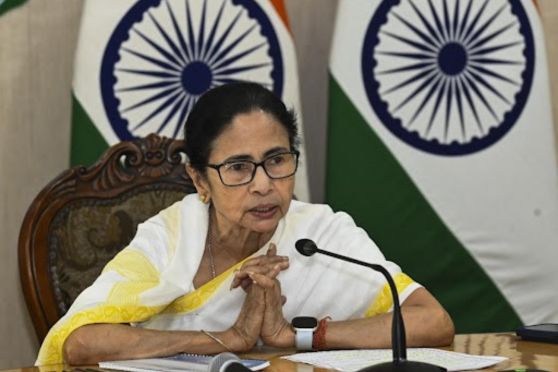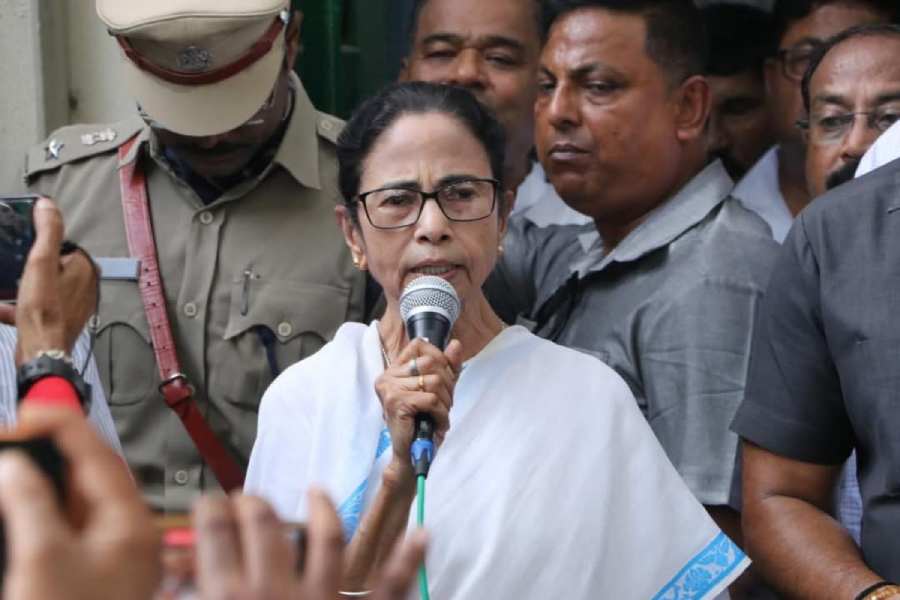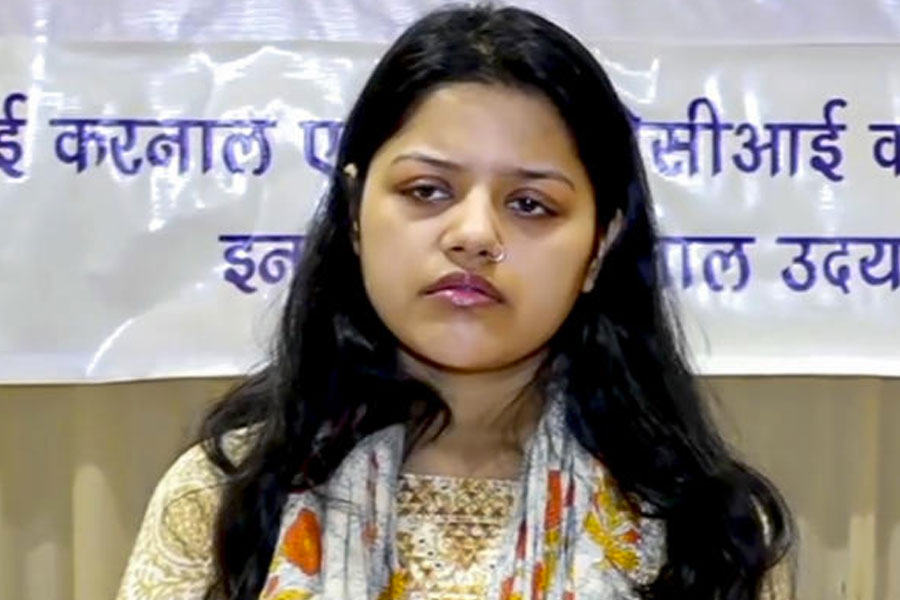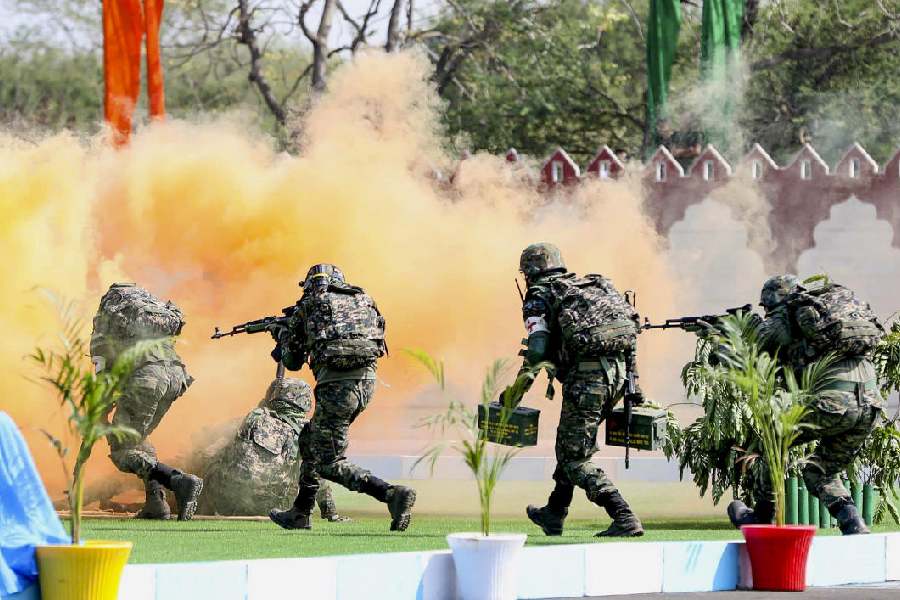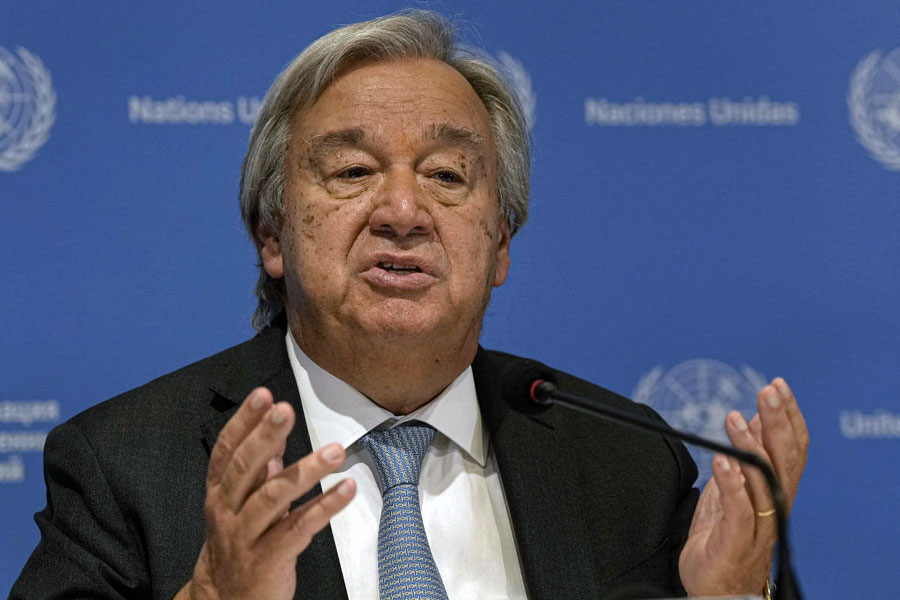 |
| Nearly half the suicide cases reported are of people less than 25 years |
It’s been another busy day in the Gangtok hospital. Dr C.S. Sharma, a senior consultant in the psychiatry ward, is taking a break after working through his lunch hour. He has been counselling a 30-year-old housewife and believes he’s made some headway. “For the time being at least, it’s one suicide less,” says Dr Sharma.
His patient, Nitika Rai, is suffering from chronic depression. Family conflicts have pushed her to the brink of suicide. “I just need to get rid of this life,” she says.
Death stands out like a spectre in cheerful Sikkim. Mossy little lanes go up the hills in Gangtok, to little houses surrounded by flowers. Inside the psychiatry ward at the STNM Hospital, though, grey is the dominant colour.
Sikkim has won a dubious distinction — it’s the state with the highest rate of suicide, a position that went to Kerala year after year. According to the latest figures of 2008 of the National Crime Record Bureau (NCRB), Sikkim has a suicide rate of 48.2 per lakh population — four times higher than the national average. Pondicherry is second with 46.9 per lakh, followed by the Andaman and Nicobar Islands and Kerala.
More and more people are going through depression, a clinical illness, prompting many in Sikkim to take their own lives. “The reasons could be drug abuse, alcoholism, family conflicts and disturbances in socio-cultural networks,” says Gangtok-based neuro-psychiatrist Dr C.L. Pradhan.
Police records estimate 15-20 suicides every month, though health experts say many cases go unreported. Rai is one of the lucky survivors who got medical help, unlike Jiwan Subba, a 17-year-old youth from Tadong in east Sikkim who took his life last year. His bid to be close to a girl who was not interested in friendship was tearing him apart. “We had no idea he was depressed,” says his mother, Chandramaya Subba.
With a population of 5.68 lakh, Sikkim has seen a drastic rise in suicides in recent years. The suicide rate per lakh population jumped from 20.7 in 2007 to more than double in a year. Even when Kerala led with the highest rate, it was nowhere near the figures Sikkim is faced with. In 2007, Kerala’s suicide rate, the highest among all states, was 26.3 per lakh population.
Ironically, the Centre dubbed Sikkim the “Safest Small State in India” in 2008. Today, the state has a large band of unhappy youth. According to Sunil Verma, professor of psychology at Sikkim University, 45 per cent of suicide cases reported between 2000 and 2008 were of people less than 25 years of age. “It’s the changing value system which is driving youngsters to end their lives,” argues Verma.
The experts say the changing value system envelops several developments — including the breakdown of the joint family system. Parents have high expectations of children, which often go unfulfilled, leading to discord. “With both parents working, children are often left to the mercy of the television set,” says Verma. “Often, these youngsters fall prey to alcohol or drugs,” adds Dr Sharma.
Depression is also caused by unfulfilled aspirations among the young who believe their life is not changing as much as they’d want it to. People who move from rural areas to urban zones find there is no upward mobility, for life in rural areas isn’t very different from that in the city. “This leads to low self-esteem which in turn leads to alienation and depression,” adds Verma.
But it’s not just the young who are being hit by depression. According to the NCRB, while 33.4 per cent of suicide cases are in the 15-29 age group, 33.1 per cent are in the 30-44 age group. More men than women are committing suicide, often spurred by alcoholism.
The spurt in suicide has sociologists and mental health experts worried. “This is the first time in 20 years that I have seen a state other than Kerala topping the list,” says Lakshmi Vijaykumar, a Chennai-based consultant on suicide research and prevention with the World Health Organization. “Any rapid change in society brings a problem and people are unable to adjust. I believe it’s the same case with Sikkim,” she says.
Sikkim has been slowly moving up the development ladder with multiple hydel projects leading to public-private enterprises, a boom in eco-tourism, and the information technology and hospitality sectors. “Society is in a state of transition. Many are unable to move with the pace and end up succumbing to pressures,” says Verma.
Perhaps Sikkim can pick up a lesson or two from Kerala. The state, which till 2003, had 30.8 suicides per one lakh population, now has 25.2 suicides per one lakh population. In 2003, suicide was recognised as a major social challenge in Kerala and efforts were made to tackle it. “There are numerous counselling centres run by the government as well as non governmental organisations (NGOs) to deal with suicide intervention,” says Praveena Kodoth of the Centre for Development Studies, Kerala.
Some factors are common between the two states. Both report alcoholism and family conflicts as the prime reasons for suicides. High literacy rates (90.92 per cent in Kerala and 82 per cent in Sikkim) have also led to higher expectations and unfulfilled aspirations.
“In a sense the two states are geographically isolated while being economically underdeveloped and these are known to be risk factors for suicide,” says Sohini Banerjee, who has worked extensively on suicide in the Sundarban region of West Bengal.
The two are also small states, and figures show that small states and Union territories have a high suicide rate. “In these areas, people are less aggressive and often brood over their problems. This leads to emotional turmoil,” says Vijaykumar.
Sikkim has to consider serious steps to bring down the rate of suicide to the national average of 11.2 per one lakh population. “We have to treat suicide as an epidemic,” says Dr Pradhan. “We have no NGOs or helplines working for suicide intervention and prevention,” he adds.
The professionals demand more manpower to deal with the problem. “We receive so many SOS calls every day but are unable to intervene ably,” says Dr Sharma, one of four psychiatrists at the government-run hospital grappling with an over-crowded psychiatric ward. “There are just eight psychiatrists in the state,” he rues. But with a national average of 4,000 qualified psychiatrists for a billion plus population, Sikkim seems better off than most states.
The state government, on its part, maintains that steps are being taken. “It is an alarming issue and we are devising ways to create awareness,” says chief minister Pawan Kumar Chamling. The state has organised lectures by spiritual leaders such as Baba Ramdev and Paul Dinakaran on life skill lessons, and the Buddhist leader, the Dalai Lama, is expected to visit Sikkim soon to address the people.
In sunny Sikkim, where sudden rains cloud the skies, death is the new challenge.
 |
| Nearly half the suicide cases reported are of people less than 25 years |


